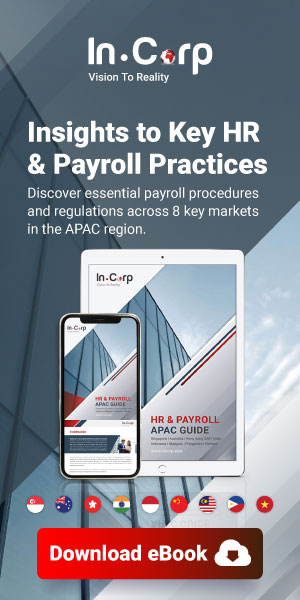Guidance on Transfer Pricing Documentation
The routine Transfer Pricing Documentation (‘TPD’) compliance required to be done at the end of the financial year is now taking center stage across jurisdictions. A complete TPD would include a description of supply chain, business models & strategies, value drivers of profit, industry analysis, description of intangibles assets and the related functions, financing arrangements, restructurings within the group and rationale for the same, assumptions behind the rejig of supply chains, commercial factors considered while taking decisions regarding shifting of functions and risks, benchmarking analysis and economic adjustments. This information is of paramount importance to support the arm’s length pricing in respect of related party transactions.
The Holy Trio as per Action Plan 13 of Base Erosion and Profit Shifting project
In the year 2013, the Organization for Economic Co-operation and Development (‘OECD’) and the G20 countries had developed a 15-point Action Plan to address Base Erosion and Profit Shifting (‘BEPS Project’). On 5th October 2015, the final package of the Actions to combat Base Erosion and Profit Shifting was released by the OECD. One of the Action (Action – 13) pertains to Transfer Pricing Documentation wherein a three-tiered documentation structure was introduced as follows:Master File
Master File provides an overview of the group business, including the nature of global business operations, overall transfer pricing policies, and global allocation of income and economic activity in order to assist tax administrations in evaluating the presence of significant transfer pricing risk.Local File
Local File provides detailed transactional documentation specific to each country, identifying related party transactions and the arm’s length analysis. The information required in the local file supplements the master file and helps to meet the objective of assuring that the taxpayer has complied with the arm’s length principle in its material transfer pricing positions affecting a specific jurisdiction.Country-by-Country Report
Country-by-Country Report provides aggregate tax jurisdiction-wide information relating to the global allocation of the income, the taxes paid, and certain indicators of the location of economic activity among tax jurisdictions in which the group operates.Singapore is part of the Inclusive Framework
Singapore is part of the Inclusive Framework (‘IF’) for the global implementation of the BEPS Project. The inclusive framework was proposed by OECD and endorsed by G20 in February 2016. By being part of the IF, Singapore works with other participating jurisdictions to ensure the consistent implementation of measures under the BEPS Project. Singapore supports the key principle underlying the BEPS Project, i.e. the profits should be taxed where the real economic activities generating the profits are performed and where value is created.
Singapore is committed to implementing the four minimum standards under the BEPS Project, one of them being Transfer Pricing Documentation.Singapore Regulations
In February of 2018, the Inland Revenue Authority of Singapore (‘IRAS’) introduced the mandatory Transfer Pricing Documentation requirements and the rules were framed thereunder – Income Tax (Transfer Pricing Documentation) Rules, 2018 (‘Rules’). These Rules have an effect for the basis period for the year of assessment 2019 and every subsequent year of assessment. The Rules require a TPD to have two levels of information – Group level and Entity level. This is a combination of information/data required in a Master File and a Local File as per OECD Action 13.The IRAS also published the fifth edition of the e-Tax Guide on Transfer Pricing Guidelines in February 2018 (‘TPG’). It explains IRAS’ transfer pricing compliance programme and position regarding various transfer pricing matters.
Singapore is committed to the BEPS project and therefore, companies whose ultimate parent entity is based out of Singapore and the group turnover exceeds S$1,125million will be required to file a country-by-country report to the Comptroller within 12 months from the end of the financial year.Role of Tax Function
The tax function in an organization has greatly evolved from a tick-the-box compliance approach to a highly value-adding function of managing risk and reputation. Critical business decisions cannot be taken in isolation without understanding as to how the tax/ transfer pricing risk is being managed. The objectives of the key stakeholders have to be aligned with the overall corporate strategy and tax/ transfer pricing positions of the group.The tax function today has a wider role to formulate, execute, and manage the changes in the transfer pricing policies of the group. This ensures timely identification of any inconsistency and detection of transfer pricing risks so as to trigger the corrective action.
Related Read: What is Transfer Pricing in Taxation?An Ounce of Prevention is Worth a Pound of Cure
In today’s world, the tax authorities around the globe are working in a coordinated manner wherein taxpayer information can be shared in a transparent manner. Singapore signed a Tax Information Exchange Agreement (‘TIEA’) with the United States of America on 13 November 2018 (effective date 1 January 2021) and with Bermuda on 29 October 2012 (effective date 1 January 2013). The TIEA permits Singapore and the corresponding tax authority to exchange information that is foreseeably relevant for the administration and enforcement of the respective domestic tax laws. Therefore, tax controversy is not confined to a single jurisdiction now. The taxpayer has to ensure that the transfer pricing positions adopted and documented are in sync with the value created by each entity in the group/ based on economic substance. To prove that the related party transactions have been undertaken at arm’s length, the primary document is the TPD. The TPD (along with the inter-company agreements) is the critical defense document for the taxpayer during the course of the Transfer Pricing audit as it depicts the understanding of the related party transactions and the corresponding functional, asset, and risk analysis.If the taxpayer is unable to provide the TPD, the tax authorities may conclude that the taxpayer is not aware that the related party transactions are being undertaken on an arm’s length basis and therefore, will determine the arm’s length price that may lead to adjustment and subsequent penalty.
Due to the subjective nature of transfer pricing, tax authorities are always interested in scrutinizing the related party transactions. Therefore, it is imperative that the taxpayer is prepared with the documentation (TPD, inter-company agreements, invoices, minutes of meetings, sample e-mails, etc.) to prove that the inter-company pricing is at arm’s length.Alternate Dispute Resolution
The IRAS provides a Singapore taxpayer to resolve tax disputes arising as a result of adjustments made by IRAS or a foreign tax authority to the transfer prices of its related party transactions. The taxpayer may choose to resolve the issues through:- Requesting IRAS to resolve the double taxation through the Mutual Agreement Procedure (‘MAP’).
- Avoiding transfer pricing disputes by applying for an Advance Pricing Arrangement (‘APA’) for its related party transactions for future years.
Para 8.32 of TPG clearly states that the success of the above mechanisms depends on the cooperation from the taxpayers and therefore, one of the factors mentioned by IRAS is that the taxpayer should provide access to the TPD.
Thus, it becomes imperative for the taxpayer to have the TPD in place as the document would be critical during discussions. The absence of TPD and other supporting documents may lead to the discontinuance of MAP/ APA.Conclusion
It concerns all businesses (that have intra-group transactions) irrespective of the scale! Singapore Transfer Pricing Regulations require a taxpayer to prepare year-end TPD if the gross turnover of the Singapore entity exceeds S$10Mn or the entity was required to prepare TPD in the past year. Singapore Transfer Pricing Regulations also provide for past qualifying documentation, i.e. TPD prepared for a particular year may be used for the subsequent two years if the prescribed conditions are satisfied. Thus, there is an exemption from preparation of fresh TPD, however, the related party transactions still need to be at arm’s length. Therefore, as a best practice and from viewpoint of corporate governance, the taxpayer must undertake the Transfer Pricing benchmarking analysis (in case a full-fledged year-end compliance documentation is not applicable) to make sure that the related party transactions undertaken during the financial year comply with the arm’s length principle from Singapore Transfer Pricing perspective. The analysis will also aid in substantiating the Transfer Pricing positions in case of a tax authority challenge. The taxpayers should endeavor to adopt technology that enables the correct recording of related party transactions on a real-time basis and the corresponding inter-company balances. The key management personnel along with the other internal stakeholders must continuously monitor the inter-company pricing policies to ensure that the group is achieving the desired milestones along with corporate governance objectives. This will go a long way in maintaining and enhancing the reputation of the group.FAQs
- Documentation on transfer pricing refers to records kept by taxpayers to show that their related party transactions are carried out at arm’s length.
- Yes, it is. In February of 2018, the IRAS introduced the mandatory Transfer Pricing Documentation requirements and the rules were framed thereunder – Income Tax (Transfer Pricing Documentation) Rules, 2018 (‘Rules’). These Rules have an effect for the basis period for the year of assessment 2019 and every subsequent year of assessment.
- The transfer pricing concept of arm’s length states that the price paid for a given commodity from one interested party to another must be the same as if the parties were unrelated. Thus, what the price of the contract will be on the open market is an arm’s-length price for a contract.
- The taxpayer can choose to resolve tax disputes from the following options:
- Requesting IRAS to resolve the double taxation through the Mutual Agreement Procedure (‘MAP’).
- Avoiding transfer pricing disputes by applying for an Advance Pricing Arrangement (‘APA’) for its related party transactions for future years.
- Transfer Pricing Documentation has to be prepared before the due date for filing your company’s annual tax returns.
- No, IRAS does not have any preference. Taxpayers should instead select the Transfer Pricing Method that produces the most reliable results, taking into account the quality of available data and the degree of accuracy of adjustments.Taxpayers may also choose other more appropriate methods or use a combination of various methods to comply with the arm’s length principle. Whichever method the taxpayer chooses, transfer pricing documentation should be maintained to demonstrate that its transfer prices are established in accordance with the arm’s length principle.



